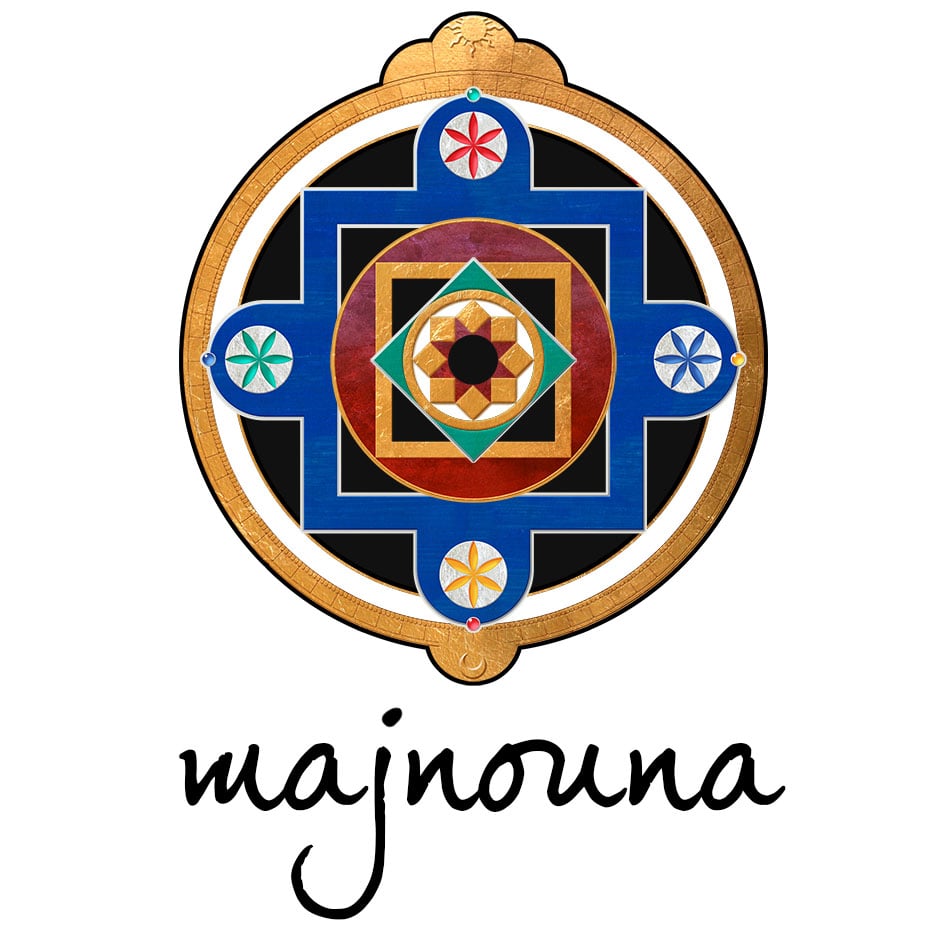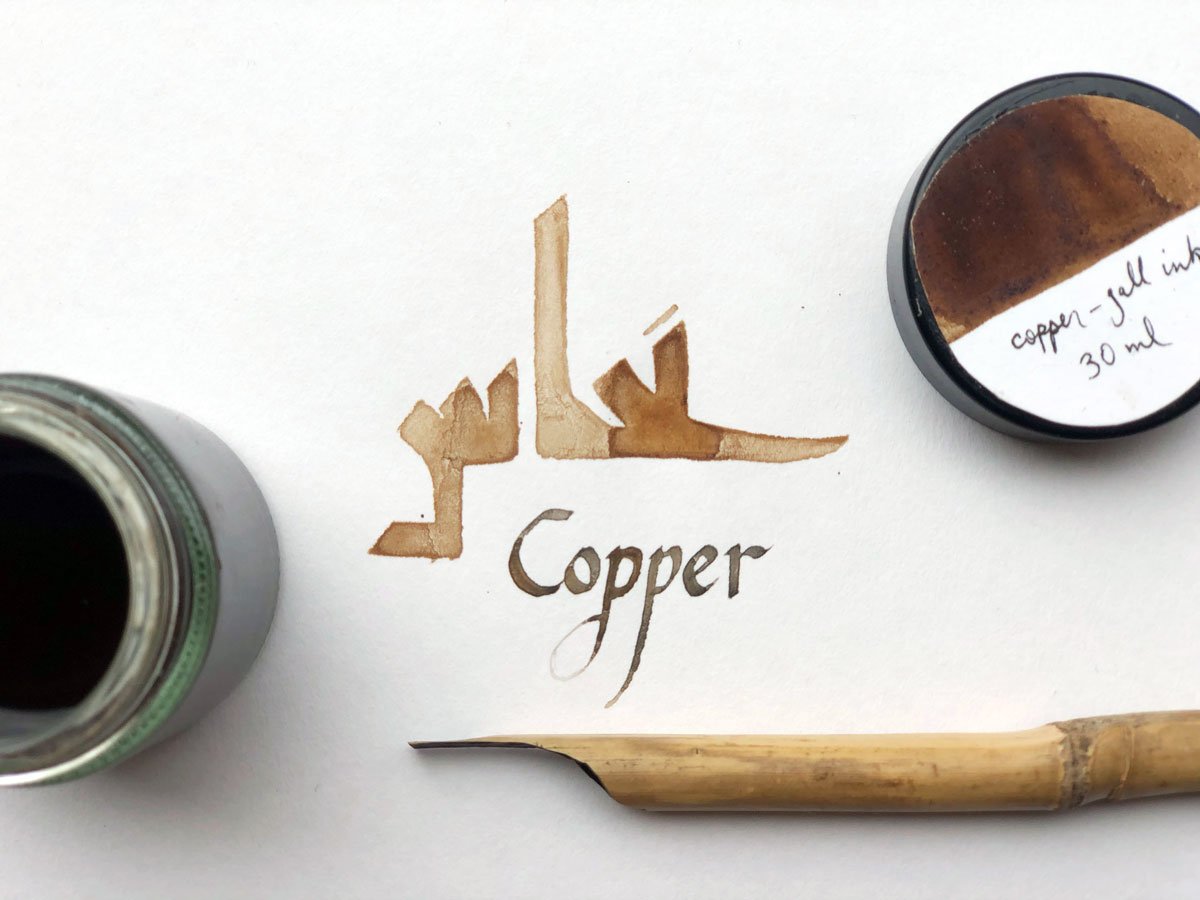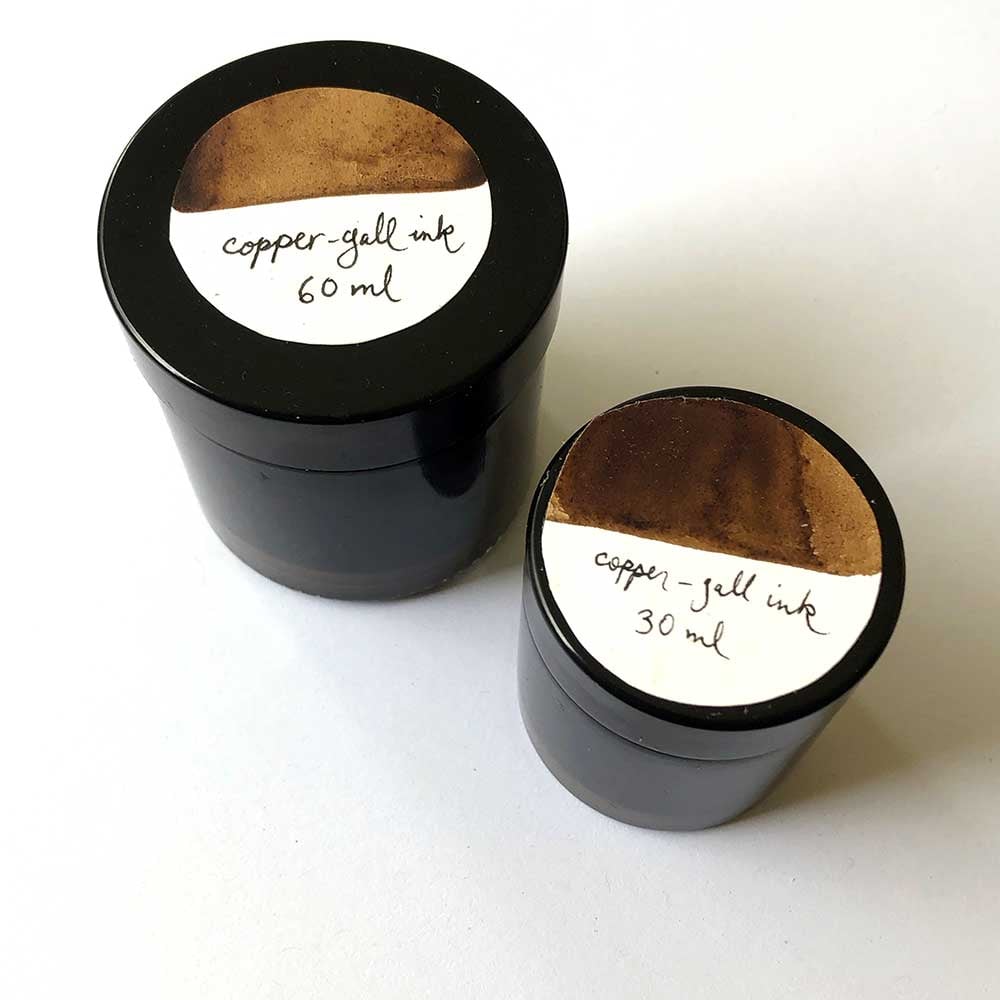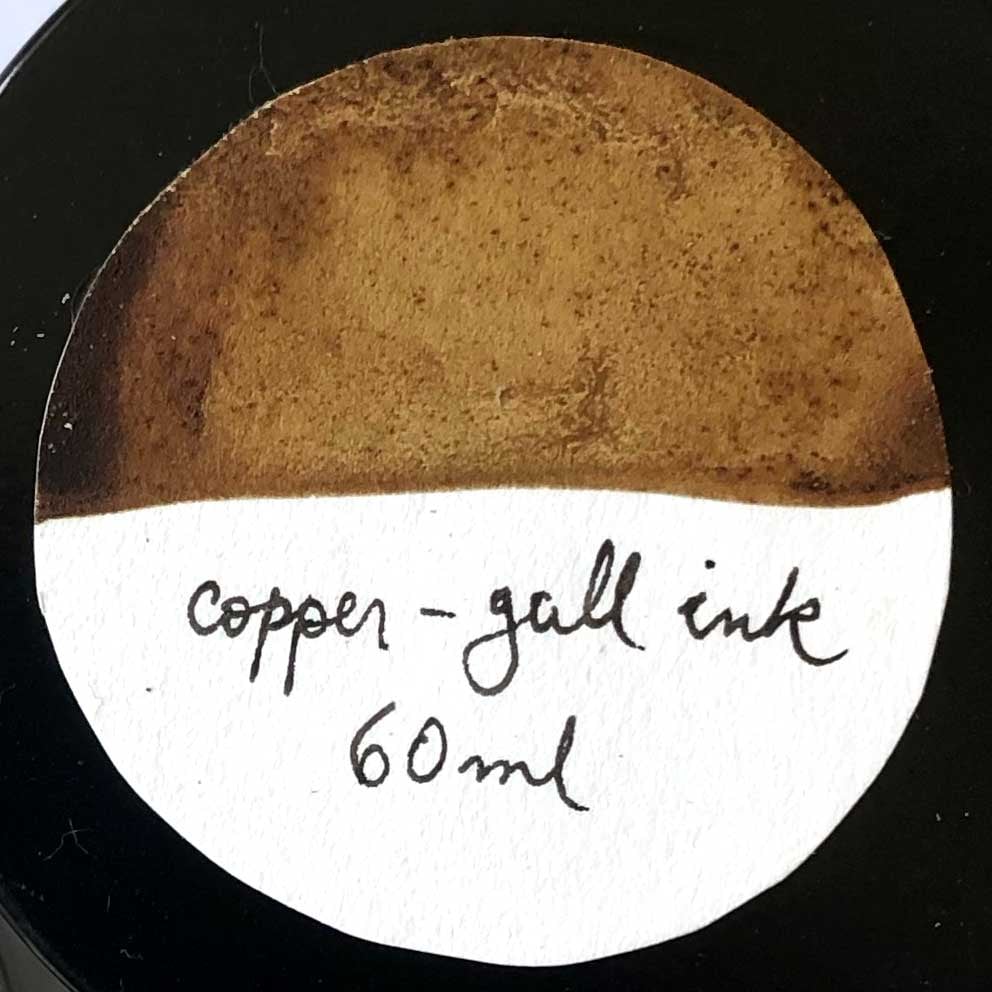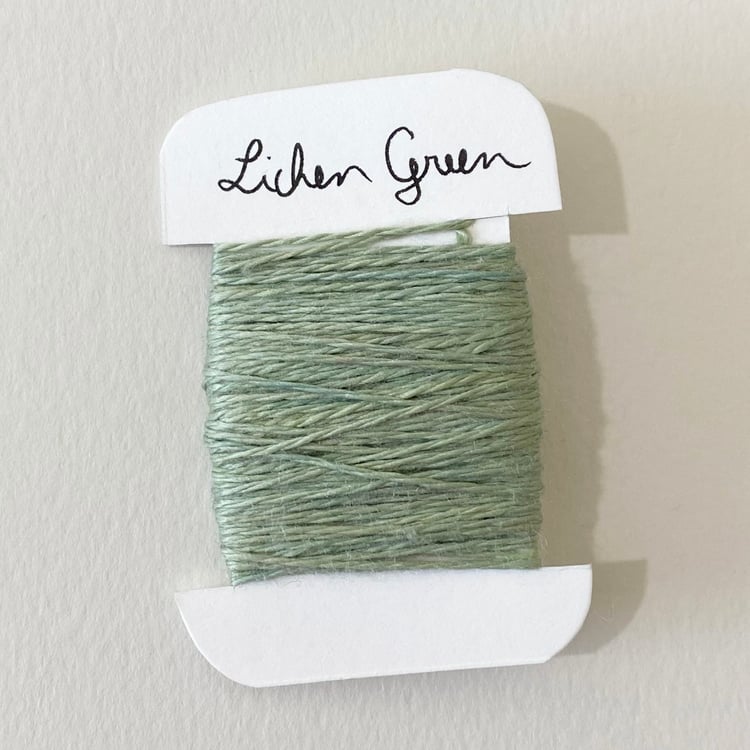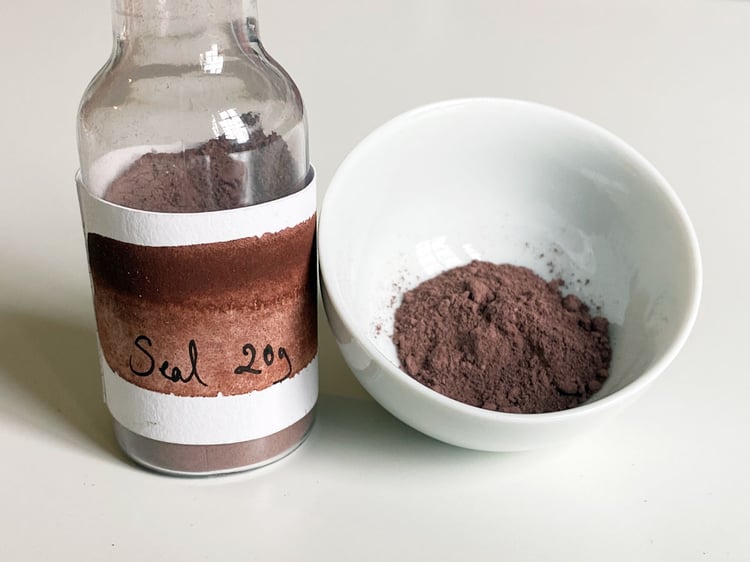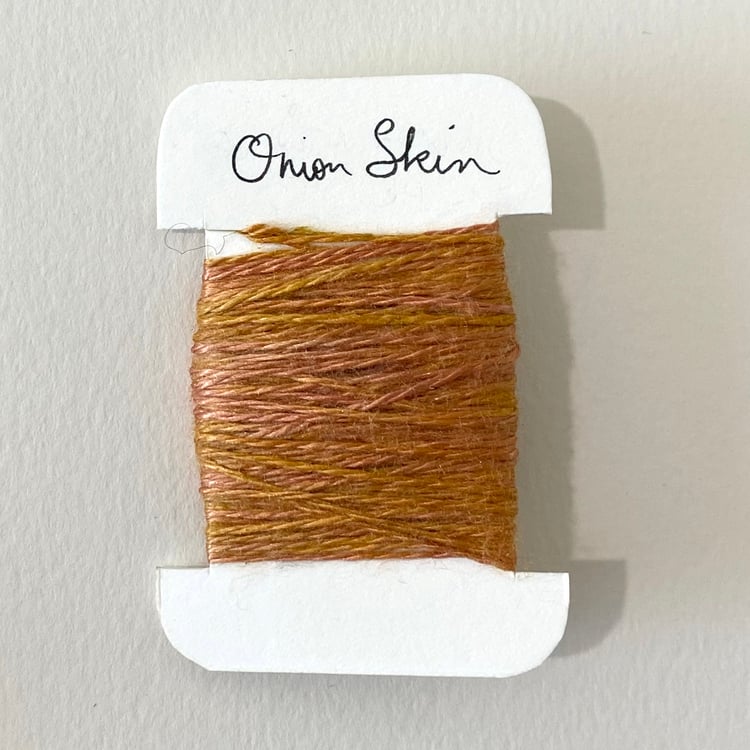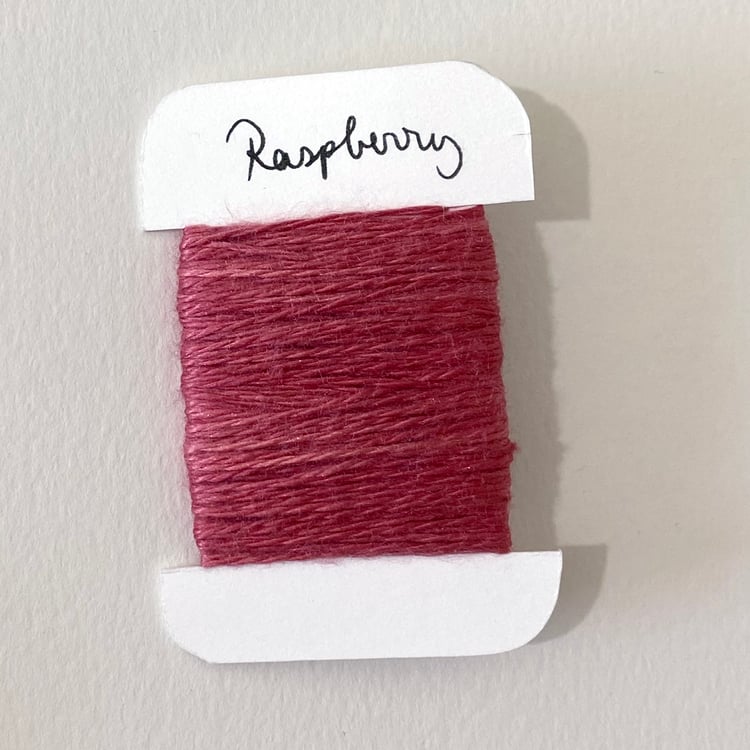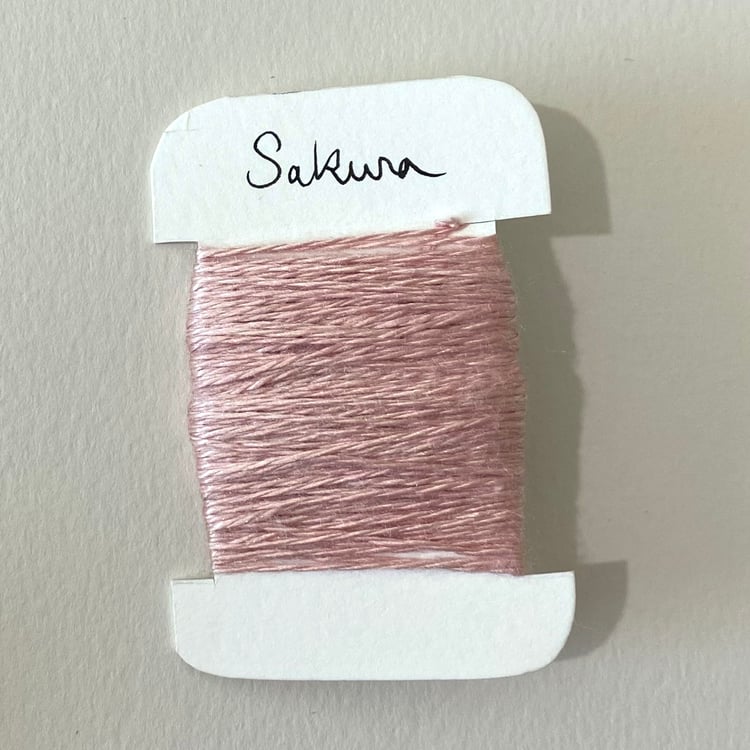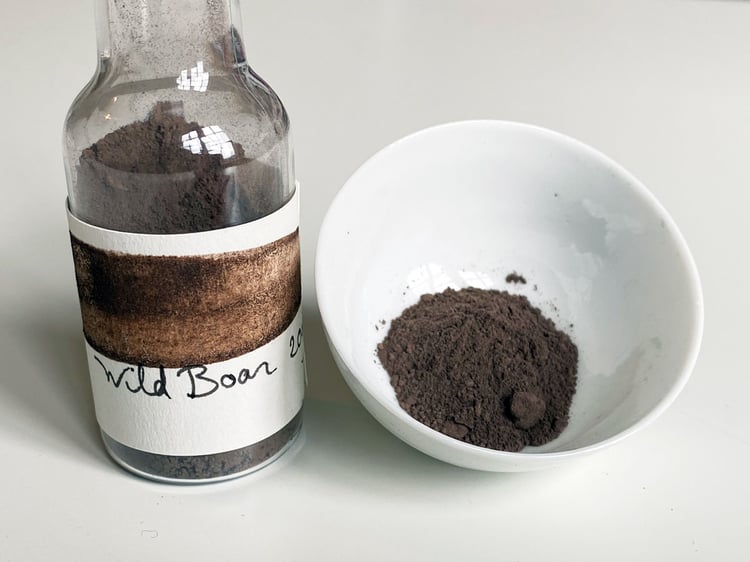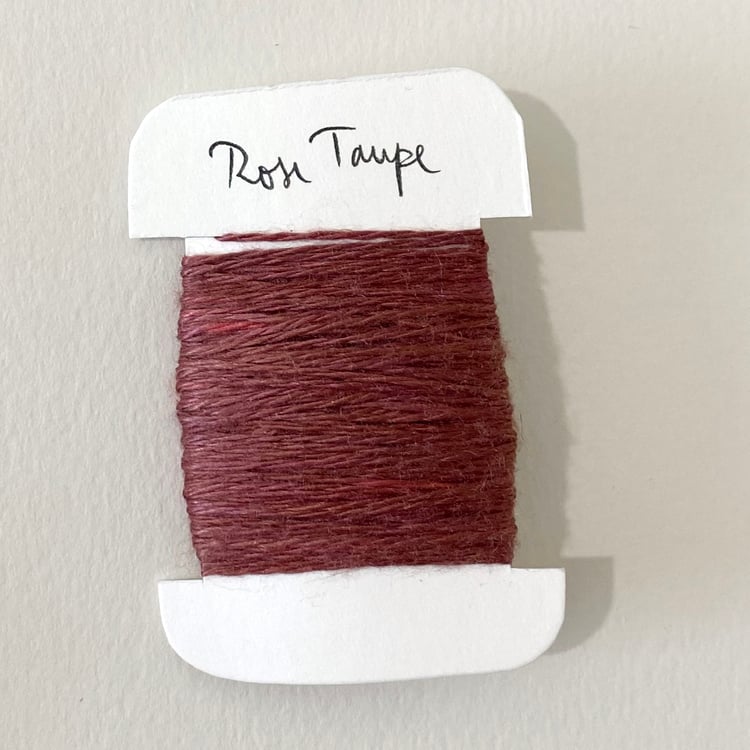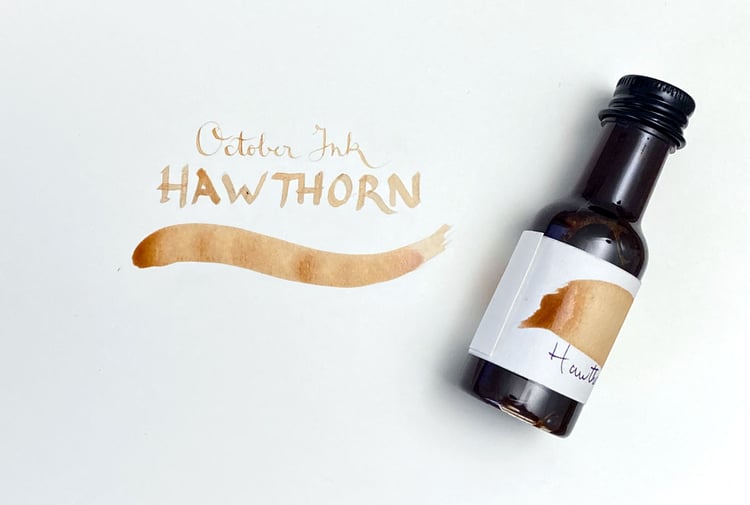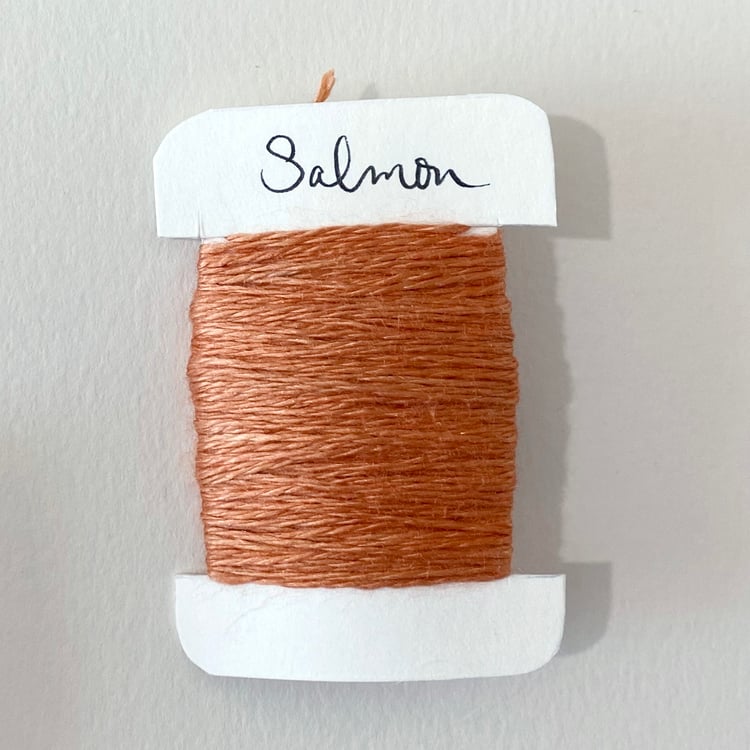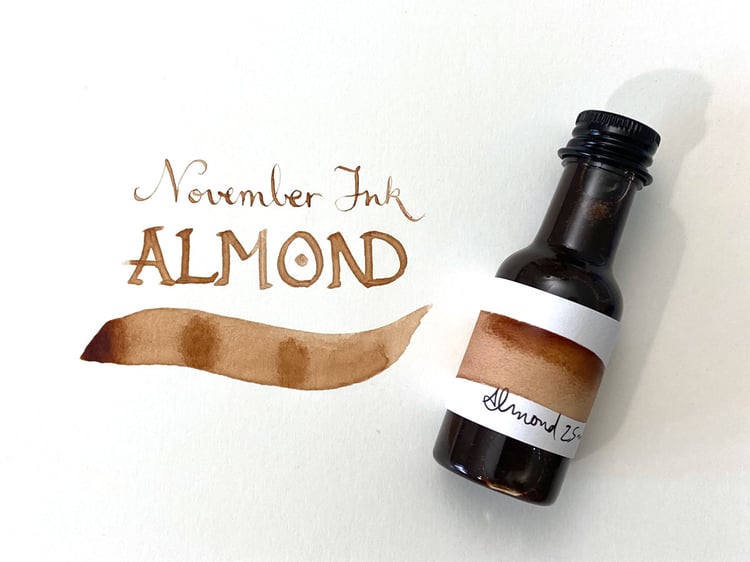Historical Ink: Gallnut brown (copper-based)
The inks in this series are based on early Islamic recipes for tannine inks (ḥibrحبر), fluid inks that react chemically with the support for a lasting bond: for a long time this quality made them the preferred ink for sacred texts. The main component is extracted from oak galls which I forage in my local woodlands, with a modifier to determine colour: in this case copper salt aka blue vitriol. Also contains gum arabic as binder and cloves for preservation.
This ink is lightfast, durable, and waterproof once dry. Note that to keep down postal costs, all inks are now shipped in flat bottles rather than jars.
User notes:
Tannine inks are thinner than today's black inks (which are carbon-based and technically are thin paints), with a wider range from deep black to transparent grey depending how much liquid is deposited on the paper. This black ink darkens as it dries, as exposure to air oxidises its iron contents.
They are suitable for use with any dipping instrument: bamboo/reed pens, metal nibs (provided they are rinsed after use), quill pens, watercolour brushes, but NOT suitable for fountain pens. They're not only the original calligraphy ink, they are lovely to draw and paint with: they can be watered down to make sensitive washes and are completely waterproof once dry, and safe to paint over with watercolour or other. This makes them ideal for use as an underlayer before painting over. Just be sure to stir before use, as all natural products tend to settle.
Lifespan:
Tannine inks are good for years, though if a jar is not frequently used, over months and years the black precipitate forms a deposit at the bottom of the jar. This deposit shouldn't be stirred and cannot be used. This does take a long time, however. Meanwhile the main concern is the prevention of mould, which can form once the jar is opened and instruments are dipped in. The cloves in your jar are an efficient deterrent and are usually all that is needed for this purpose.

